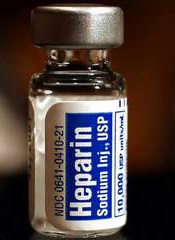
The effectiveness of thromboprophylaxis in otolaryngology patients undergoing surgery differs based on patient risk and the procedure, a new study suggests.
Overall, the incidence of venous thromboembolism (VTE) was similar between patients who received prophylaxis and those who did not.
However, prophylaxis reduced the incidence of VTE in patients with a high Caprini risk score and those who underwent microvascular free tissue reconstruction.
On the other hand, there was an increased risk of bleeding complications associated with prophylaxis among patients who underwent microvascular free tissue reconstruction and in the cohort overall.
Vinita Bahl, DMD, of the University of Michigan Health System in Ann Arbor, and his colleagues conducted this research and recounted the results in JAMA Otolaryngology–Head & Neck Surgery.
The researchers analyzed 3498 patients treated by surgeons at an academic medical center between September 2003 and June 2010. The team assessed the incidence of VTE and bleeding complications in the 30 days after surgery.
In all, 1482 patients received VTE prophylaxis. Most (96.8%) received subcutaneous unfractionated heparin (5000 IU 2-3 times daily), 3.1% received enoxaparin (30-40 mg daily), and 0.1% received fondaparinux (2.5 mg daily).
The incidence of VTE among all patients was 1.3%—0.74% were deep vein thromboses and 0.66% were pulmonary emboli. The overall incidence of bleeding complications was 2.2%.
VTE occurred in 1.2% of patients who received prophylaxis and 1.3% of patients who did not (P=0.75).
Bleeding complications occurred in 3.5% and 1.2% of patients, respectively (P<0.001).
Patients with Caprini VTE risk scores greater than 7 were less likely to develop a VTE if they received perioperative prophylaxis—5.3% vs 10.4% (P=0.06).
Prophylaxis also decreased the incidence of VTE among patients who underwent free tissue transfer—2.1% vs 7.7% (P=0.002). But it increased bleeding complications—11.9% vs 4.5% (P=0.01).
Bleeding complications were associated with concomitant use of antiplatelet medications and VTE prophylaxis.
In all other patients, prophylaxis did not affect the incidence of VTE or bleeding. VTE occurred in 1% of treated and 0.6% of untreated patients (P=0.12). And bleeding occurred in 1.5% and 0.9% of patients, respectively (P=0.15).
These results suggest the Caprini risk assessment model is an effective tool to stratify otolaryngology patients according to VTE risk, the researchers said.
However, they believe additional research is needed before recommendations can be made for patients undergoing free tissue reconstruction, as prophylaxis reduced their risk of VTE but increased their risk of bleeding.

